TOK
IB Theory Of Knowledge Exhibition

TOK
IB Theory Of Knowledge Exhibition
Henry Lin, Year 12, Ridgeway Campus
The Theory of Knowledge exhibition is an opportunity for IB students to showcase the work they have done in ToK over their first year. Students spend weeks researching 3 objects and creating a 1000-word commentary to answer a key knowledge question, which they share with their peers, teachers and guests in a student prepared gallery walk.
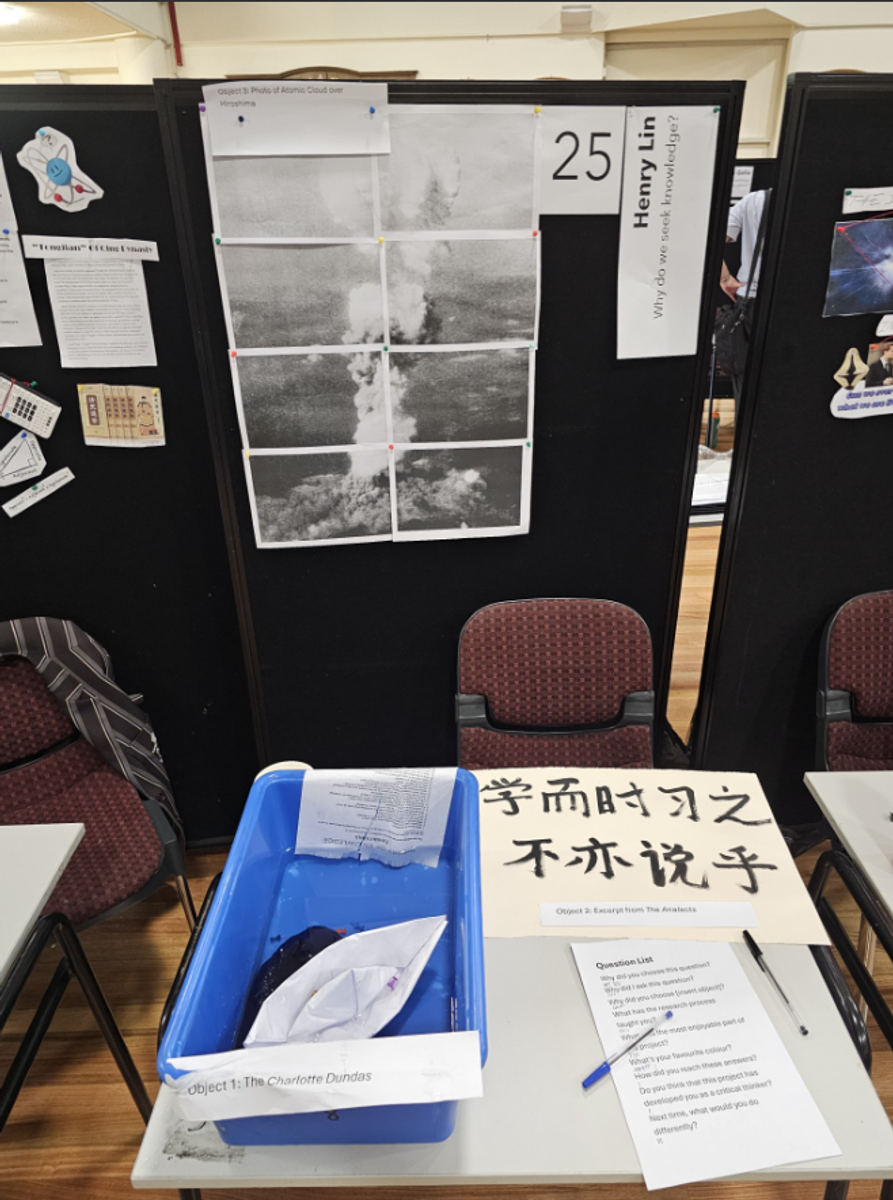
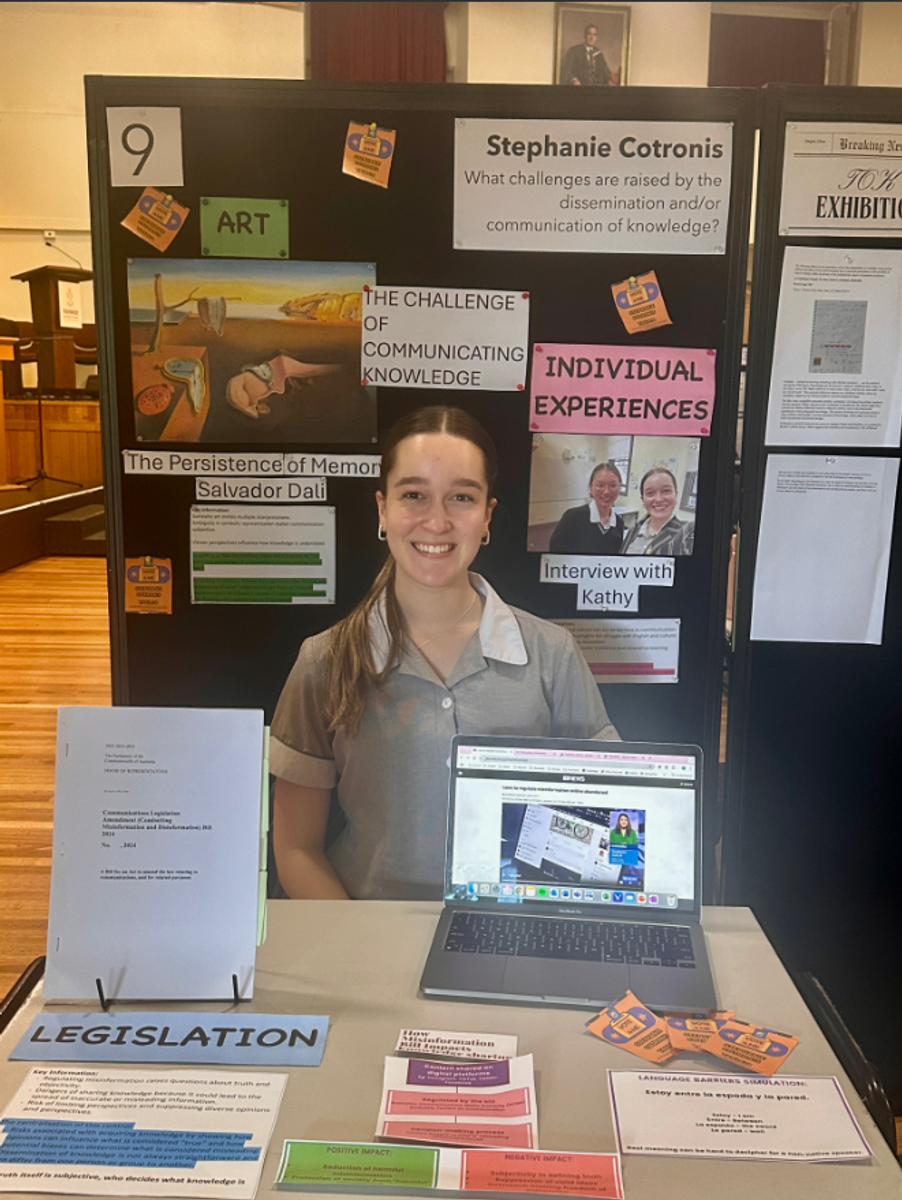


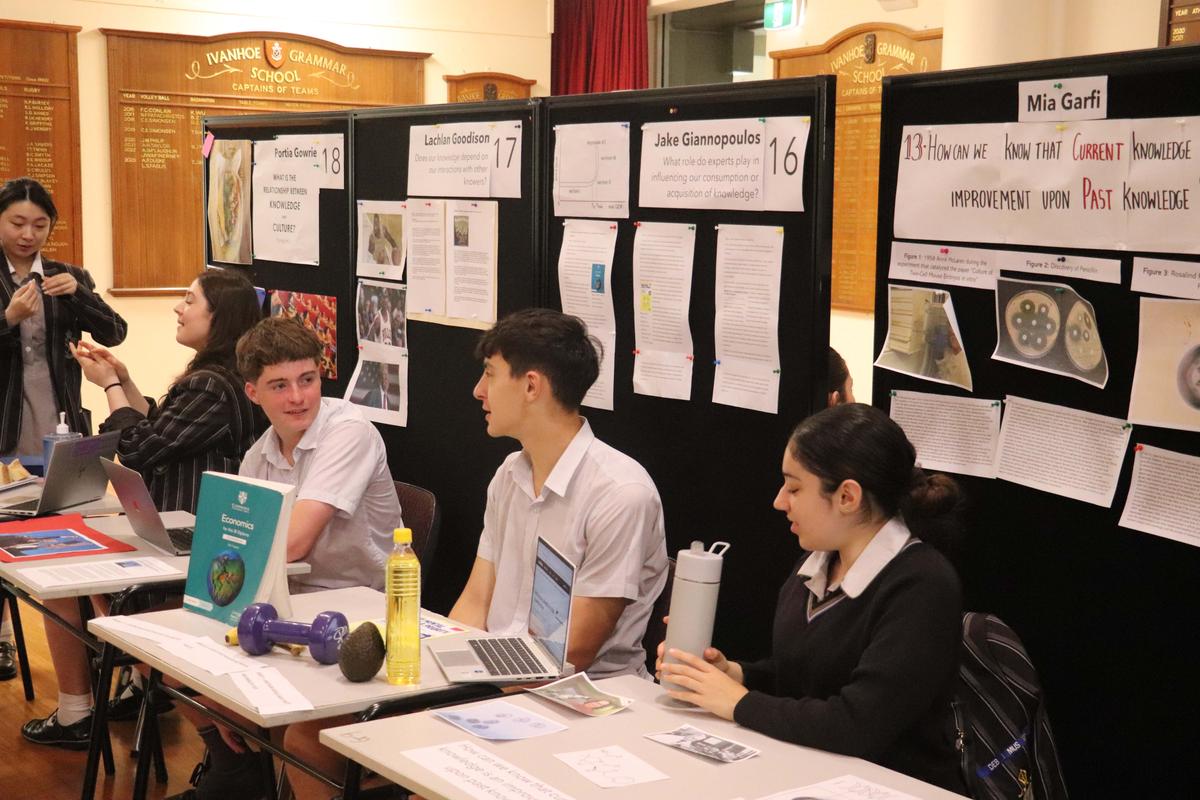

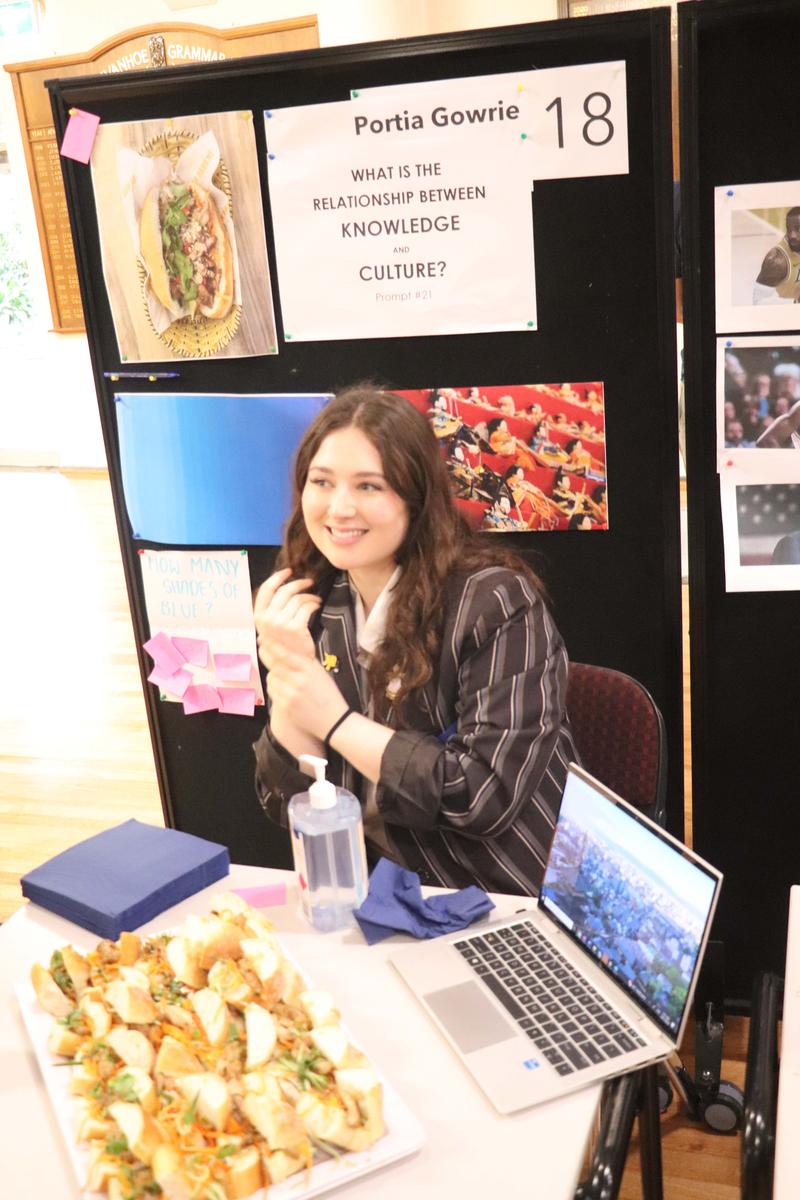



Freya Hosking, Year 12, Ridegway Campus
12. Is bias inevitable in the production of knowledge?
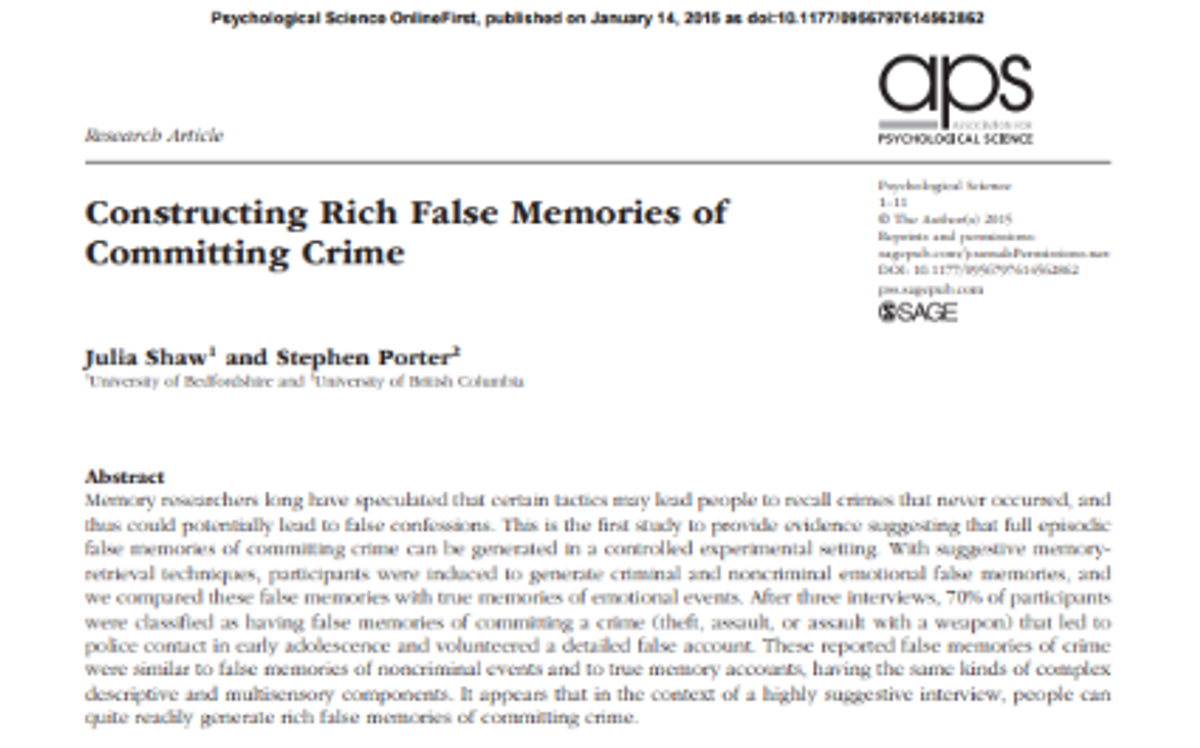

Shaw and Porter’s 2015 experiment on reconstructive memory implies that bias is inevitable in the recollection of knowledge. Reconstructive memory states that misinformation influences recall, and that memory is consequently fluid and malleable. Bias can thus be explored through cognitive biases1 . In Shaw and Porter, 70% of participants were manipulated into believing fabricated childhood crime stories. As memories could be changed, and cognitive processes such as recalling knowledge are methods of producing knowledge, the study shows that cognitive processes, for example memory, are unreliable. Therefore, this retrieved knowledge, when used in the production of new knowledge, is likely to be incorrect, biased or unable to be trusted, implying that bias is inevitable in the production of knowledge, specifically memory and knowledge produced in cognitive processes. This inevitability is then introduced as there is currently no method in reducing such biases: potentially referring to other sources when creating accounts of events so as to reduce inaccuracies, but even then cognitive processing is inevitable, thus concluding that cognitive bias is inevitable, and that bias is inevitable in cognition-centred production of knowledge.
This study also demonstrates bias’s inevitability through methodology – specifically sampling bias. The sample size was small (60) and was mainly female and Caucasian. This creates a sampling bias – characterised by the unproportionate sample for the intended population of the research – that being anyone with cognitive processing. A study of that size would not be feasible, thus suggesting that bias is inevitable in the production of knowledge in psychological studies, as sampling bias is inevitable. This highlights the limitation of psychological research, specifically the frequency of extraneous variables surrounding human behaviour, creating difficulties in limiting cognitive bias. This means it will remain inevitable in cognitive processes and knowledge for the foreseeable future.


In other areas of knowledge, bias is avoidable by focusing upon empirical data produced by machines or equipment – an example of such equipment is the Ohaus STX Accurate scales. These scales provide data in readabilities up to 0.001g and are thus very precise. The knowledge they produce is objective, and certainly quantifiable, as scales are not sentient – one can thus presume that there are no personal views, or biases influencing the mass recorded, suggesting that bias – an inclination towards a certain group - is not inevitable in the production of empirical data.
However, one must consider the potential of improper calibration, and implications in application. This is where a scale loses accuracy due to excessive use, meaning all measurements are consistently inaccurate by the same factor, thus creating errors in data, or research bias. Research bias is a difference in means for two datasets resulting from systematic error.2 If measurements are consistently inaccurate, but only used for relative results, bias is not present as the relative differences remain accurate despite absolute errors. However, if the data was used to determine precise weights of individuals, the results would be inaccurate and create bias: one application is in applying doses of medication. In 2010, nearly 480 event reports submitted to the Pennsylvania Patient Safety Authority mentioned medication errors that resulted from breakdowns during the process of obtaining or communicating patient weights – of which nearly 2/3 of these errors reached the patient in dosage.3 While this was in hospital situations, such errors in a drug trial, for example, would severely change the results, and create research bias, as participants may be given incorrect doses, and have abnormal results.
This bias is avoidable by checking the scales’ calibration before making measurements, a standard scientific procedure, meaning that bias is not inevitable when producing knowledge such as quantitative data.


In the song Zombie by the Cranberries, bias is expressed through political opinions. It discusses an attack by the IRA in the UK, killing two children. It has since become an anthem against violence.
Bias was present in the production of this knowledge – writing the song – as it is derivative. Dolores O’Riordan, the lead singer of the Cranberries, was very open about her inspiration, anger at the bombing and synonymity of violence with Ireland. In an interview she discussed how 'the fact that innocent people are being harmed’ provoked her to write Zombie, and a desire to create a 'very human' song. The band thus focused upon opinion rather than precise details, increasing the songs relatability and amplifying bias.
In the arts, subjectivity and an exploration of opinions is highly valued. This often leads to higher levels of biases being present in the production of knowledge such as songs or art than other forms of knowledge. Art is not upheld to the same standards of integrity in knowledge as academic papers on similar topics: for example, in an exploration of the same incident that catalysed ‘Zombie’ in a credible academic paper, all sides would be explored, causes and consequences evaluated, instead of merely ignoring all of that process and stating an opinionated conclusion.
Any art created by humans will possess this bias, due to inability to create true neutrality or objectivity in our thoughts, and any substitutions – for example AI – may possess bias through biased behaviours acquired from the training undergone or algorithm utilised. And, as of yet, art cannot be produced by any other ‘creator’, ensuring bias is inevitable. Returning to Zombie, O’Riordan’s identity as a left-wing Irishwoman is present, and expected in any production of knowledge, let alone in a field where subjectivity is encouraged. Thus, bias is inevitable in the production of knowledge in the arts, due to the purpose of the knowledge produced.